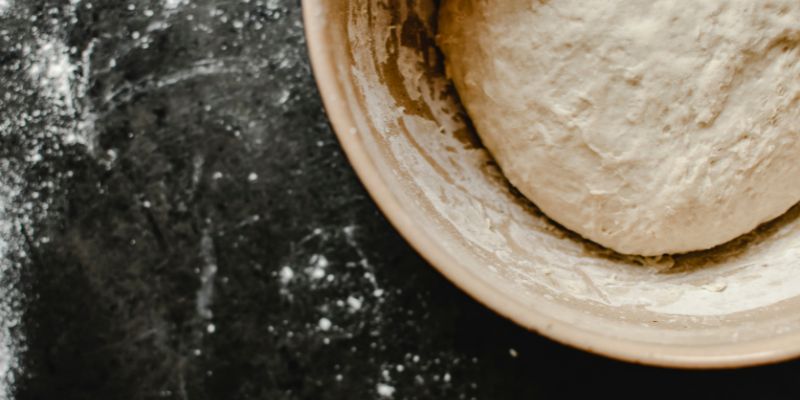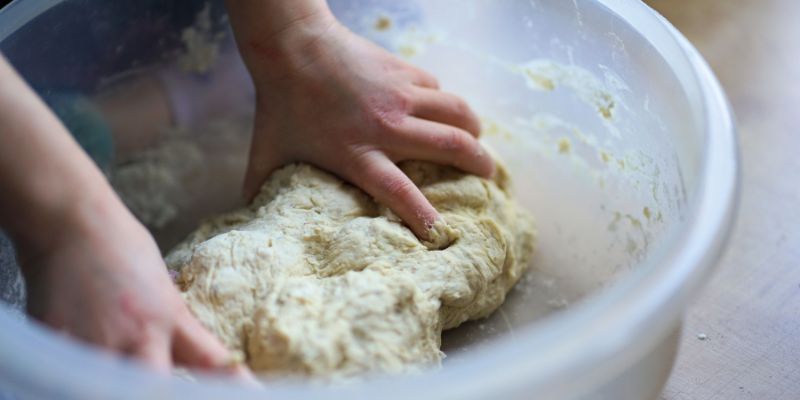How To Ferment Sourdough Properly: A Complete Guide
Sep 03, 2023 By Cassandra Bailey
It's common knowledge that sourdough fermentation science enhances bread's taste and texture. Sourdough enhances the bread's flavor, texture, nutritional value, and longevity. Sourdough also enhances the bioavailability of minerals and reduces the glycemic index of foods while enhancing the texture and flavor of whole-grain, fiber-rich, or gluten-free items.
Sourdough breads suitable for coeliacs are now the subject of research, and various methods are being tested. One way to enhance gluten-free bread's flavor is to ferment non-toxic flours and use the resultant sourdough. What happens when a gluten-free bread recipe is supplemented with sourdough made from a non-toxic blend of brown rice flour, corn starch, buckwheat, and soya flour has been studied.
The scientists compared the effects of sourdoughs fermented with various lactic acid bacteria strains on the chewiness of gluten-free loaves. Small deformation viscoelastic measures and confocal laser-scanning microscopy could identify the dough's structural changes.

Bulk Fermentation
The bulk fermentation process is crucial to the success of your sourdough bread but is often overlooked. The bulk fermentation of sourdough bread is crucial to developing its taste, crumb structure, and rise.
A poorly proofed loaf of bread may be traced back to improper proofing of the sourdough, which can be traced back to improper sourdough bulk fermentation. This sourdough fermentation guide will answer many of your questions about the significance of bulk fermentation, methods for regulating it, and telltale signs that it's done.
How Do You Handle Bulk Fermentation?
The bulk fermentation phase of sourdough baking takes the longest at room temperature and is the trickiest to judge. Allowing the bread dough to ferment on its own time during bulk fermentation requires minimal intervention. However, other things must be done at regular intervals throughout bulk fermentation.
A sequence of folds should be performed during bulk fermentation to control the dough's temperature, advance the gluten formation, and gauge the fermentation rate. The dough will benefit from any folding method. Among bakers, some people have strong opinions about which one is better.

What Effect Does The Starter's Diet Have On The Flavor Of Bread?
Flour has a high carbohydrate content (70-80%) with a relatively low protein content (10-15%). During fermentation, enzymes in the flour convert the starch into sugars that the yeasts and bacteria may use. As waste products, the microorganisms produce carbon dioxide, acids, and alcohol from these sugars.
More vinegary acetic acid-producing heterofermentative lactic acid bacteria are attracted to rye-based starters, imparting sour, fruity flavors to the bread. Softer cereal flavors may be achieved using wheat flour because it promotes homofermentative lactic acid bacteria, which only create lactic acid; whole wheat flour, however, contributes a malty, nutty flavor.
More water and warmer temperatures promote the growth of bacteria that produce a loaf with a more pleasant flavor. To get a sour flavor, let the sourdough bulk fermentation overnight rest in the refrigerator so that the acetic acid-producing bacteria may do their work.
How To Maintain Sourdough Bulk Fermentation Temperature?
Maintaining a consistent temperature for your dough throughout bulk fermentation is the most effective method for controlling the fermentation process. An atmosphere slightly warmer than room temperature (75-80 degrees Fahrenheit or 24-27 degrees Celsius is optimum) is optimal for the growth of sourdough yeasts.
However, maintaining a consistent temperature for the dough might be challenging if you live in an area with wildly contrasting temperatures throughout the year, with blisteringly hot days and bone-chillingly cold nights.
There are a handful of instruments that may be used to manage the temperature of the bulk fermentation, and they are incredibly useful in generating sourdough bread that is more consistent.
How Many Coil Folds or Stretch and Folds Are Needed for Sourdough?
Different sourdough recipes call for different amounts of folds and different amounts of time for bulk fermentation. You want the dough to be somewhat elastic and slightly stretchable. If you don't fold your dough enough, it will be too loose to shape properly and will likely spread out when baking.
If you fold your dough too many times, the crumb structure may become too dense. As your baking experience grows, you'll better understand when bulk fermentation is complete and how many times to fold the dough.
Since stretch and folds provide significantly stronger results, many sourdough recipes call for 4 to 6 stretch and folds. Six to eight sets are often used for moderate coil folds. Both methods or something else completely (like a slap and fold approach), may be used in some recipes.
Importance Of Bulk Fermentation
Bulk fermentation is essential because it occurs during the proving stage of making sourdough bread when the dough accumulates gases that influence the bread's structure and taste. The gluten network you form due to mixing will act as a reservoir for the carbon dioxide generated during bulk fermentation.
It will result in sourdough bread with a light texture and a fluffy inside like you would expect. The huge, even holes and tender, custard-like inner texture of sourdough bread are commonly referred to as having an open crumb and are an aim of many sourdough bakers. A well-executed bulk fermentation is required to produce an open crumb.
Even if you have the greatest ingredients, skills, and expertise, your dough may end up under or over-proofed if you underestimate bulk fermentation. Proper fermentation is essential in sourdough baking, and if you make a mistake in this step, your dough may turn out under or over-proofed.
Conclusion:
There's no need to be afraid of or puzzled by bulk fermentation. The sourdough yeasts only need to be left alone to perform their work. A baker's intuition, honed by experience, also plays a role. Knowing the telltale symptoms of a finished bulk fermentation will get you 90% of the way there.








